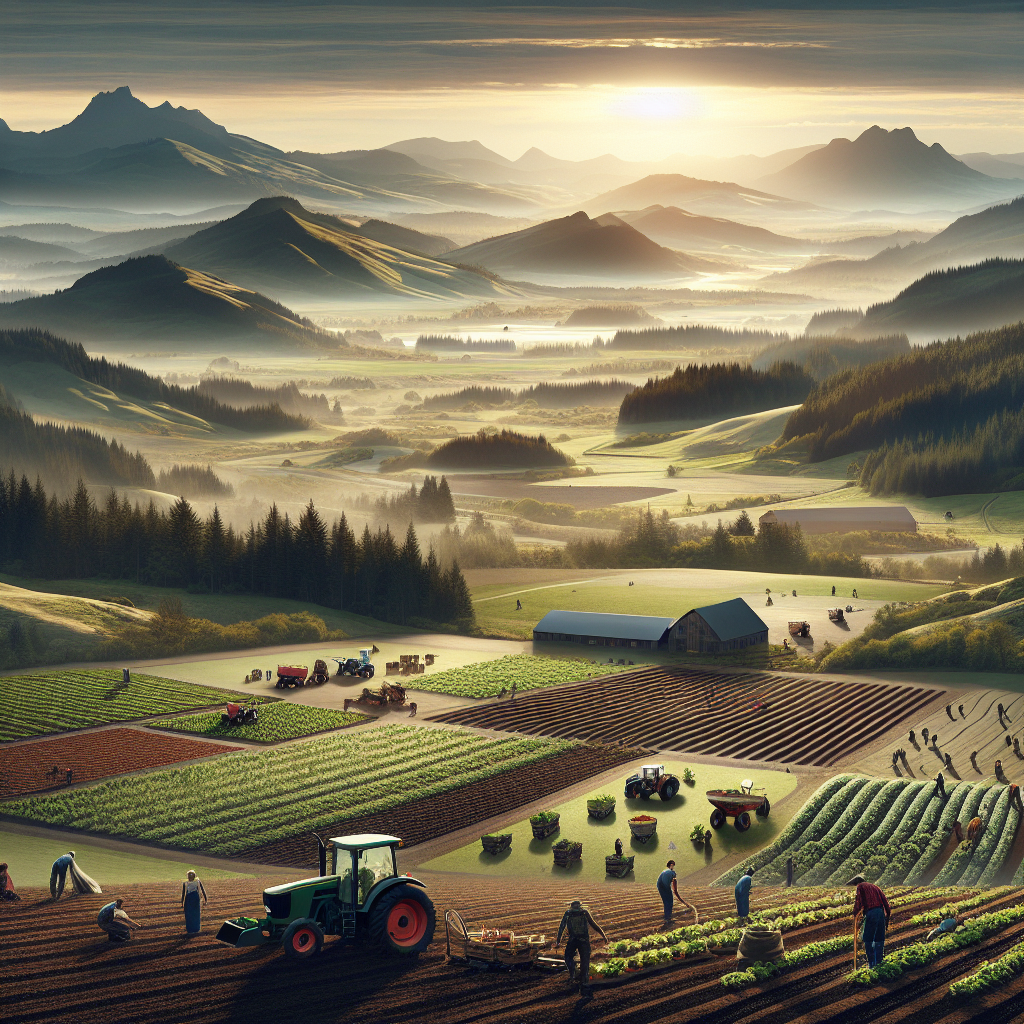The Rise of Regenerative Farming in Oregon: A Rain-Soaked Revolution
On any given day in Oregon, rain or shine, there’s a good chance you’ll catch wind of a fresh, verdant scent peculiar to the Pacific Northwest. Perhaps it’s the scent of firs after a drizzle, or the earthy aroma of a lush, rain-kissed valley. But here’s a local secret – oftentimes, nested in among those natural fragrances, is a subtle whiff of something even more captivating. It’s the smell of revolution. A revolution that’s quietly taking root in the heart and soil of Oregon – the rise of Regenerative Farming.
The wild splendor of Oregon’s diverse terrain, from the High Desert to the Willamette Valley, the Columbia Gorge to the balmy, pear-rich orchards of Rogue Valley, sets the stage for a vibrant agricultural ecosystem. In the misty embrace of the Cascade Range, an inspiring transformation is taking place. Regenerative Farming – the idea of farming WITH nature rather than against it – is gaining traction.
It’s a farming method as nurturing to the environment as a cup of Dutch Bros. coffee is to an Oregonian facing a dreary downpour. Yet it’s not just about the cozy feeling; it’s about securing a future for our land, our farmers, and our locally sourced meals.
How Does Your Garden Grow, Oregon?
Turn every direction in Oregon, and you stumble upon jaw-dropping beauty. The Crater Lake National Park is no less dazzling than it was a century ago, and the Painted Hills still glow with the setting sun. Our fertile lands are not just postcard material; they’re hardworking, contributing to a thriving agricultural industry.

However, traditional farming methods have taken a toll on our precious soils. Years of intensive tillage, monoculture, and synthetic fertilizer use have burdened Mother Nature. That’s where regenerative farming enters, like a local Portlander bringing their reusable grocery bags to New Seasons Market – prepared to make a difference.
Regenerative farming practices encourage an increase in biodiversity, enhance ecosystems, improve water cycles, and boost soil organic matter, ultimately combating climate change. It’s not just a trend, it’s a real solution. Oregon, with its unique climate and dedication to sustainability, is at the forefront of this agricultural revolution.
A Field of Dreams (and Compost)
Take a scenic drive down Highway 99W and pull up at Our Table Cooperative just outside Sherwood. This farm’s philosophy is growth: not just of its luscious crops, but of community connections, soil health, and export opportunities. Our Table Cooperative has become a beacon of regenerative farming practices, inspiring other local farms like Cloverfield Organic Farm in Eugene and Square Peg Farm on Sauvie Island.
Oregon farmers are quickly realizing that nurturing the soil instead of simply feeding the plants leads to more robust, disease-resistant crops. Plus, they have an added bonus – their farms act as carbon sinks, playing a part in Oregon’s combat against climate change—an act comparable to a Beavers-Ducks game finding the two rivals on the same team.
The Taste of Change
It can be said that regenerative farming is as Oregonian as a Saturday morning jaunt to the Portland Farmers Market. It’s a practice that encapsulates the marriage between the sustainable soul and the gastronomic spirit of the state – a pair as harmonious as Tillamook cheddar on a thick slice of Dave’s Killer Bread.
When you crunch into a juicy heirloom tomato from Groundwork Organics or indulge in a perfectly fried Carlton Farms pork chop, you’re not just relishing a local delicacy. You’re tasting the product of a resilient, intricate ecosystem that celebrates Oregon’s commitment to sustainability.
A Revolution Rooted in Rain, Soil, and Spirit
The rise of regenerative farming in Oregon speaks volumes about the state’s dedication to the environment, its understanding of climate change, and its will to give back to the land. But it also says something more: it showcases the Oregonian spirit.
Whether shaking off rain in a classic Pendleton woolen, or debating over Voodoo Doughnut flavors, locals are known for holding strong opinions and having the will to bring about change. This ethos is now prevalent in the very soil we tread upon and the food we consume.
As the rain continues to fall and the soil rejuvenates, the regenerative farming revolution marches onward in Oregon. In the end, it’s not just about healthier soils and thriving ecosystems, but about keeping the heart of Oregon beating strong. In the gentle words of an old Chinook blessing, “May the earth be good to you.” And the land responds: with every beet from Rainshine Family Farm and every onion from Persephone Farm – with a healthier, more sustainable Oregon.
The next time you bite into an Oregon Apple fresh from Kiyokawa Family Orchard, pay heed to the taste of revolution. There’s a story there, full of hope and rain, of a journey from the soil to the fruit bowl. As an Oregonian, it’s a tale that’s part of you. Explore it, treasure it, and watch as regenerative farming continues to reshape the “Eden at the world’s end.”
